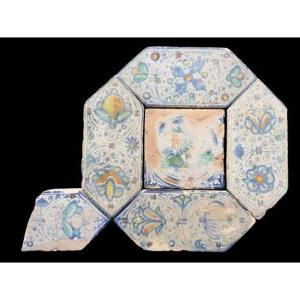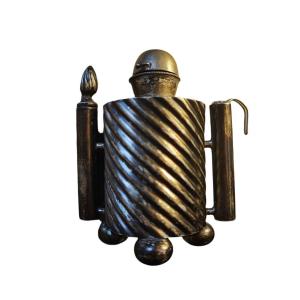Second half of the 18th century
Workshop: De Lampetkan
A genuine blue and white tobacco jar for the storage of tobacco.
The brand name, Martiniek, is painted in a floral cartouche. The brand indicates which region the tobacco came from, in this case, the Island of Martinique in the Antilles.
With an old cork lid.
Marked LPK
In the 18th century, tobacco became an integral part of social life. Initially, in the 16th and 17th century valued for its exotic origins as a medicinal product, it later gained popularity as a stimulant. Tobacco was sold in dedicated shops where shopkeepers stored it in large Dutch Delftware jars. Smaller jars were used for snuff tobacco (Rappe), as only small quantities were required. These jars often bore inscriptions identifying the specific blends, such as Kruidnagel (Clove), Bergamot, and Violet. They also indicated the region of origin, including places like Havana, Macuba (Cuba), Martiniek (Martinique), Maryland, Portorico (Puerto Rico), Virginia, St. Vincent, St. Omer, Baltimore, Duinkerken (Dunkirk), Eindhoven, and so on, and broader areas like the USA and Hollandia (Holland)
In addition to inscriptions, the jars were often adorned with decorative images. A common motif was an elaborate floral cartouche topped with a flower basket. Less frequently, jars depicted Native Americans and Moors, symbolizing the exotic roots of tobacco and its connection to slavery and plantations. Even rarer were jars featuring the VOC (Dutch East India Company) logo, an anomaly, as the WIC (West India Company) was responsible for trade with the Americas. The rarest designs included images of buildings, ships, or other unique subjects, likely special commissions.
The jar is in very good condition with the normal small chips and wear of use, according to age.










































 Le Magazine de PROANTIC
Le Magazine de PROANTIC TRÉSORS Magazine
TRÉSORS Magazine Rivista Artiquariato
Rivista Artiquariato